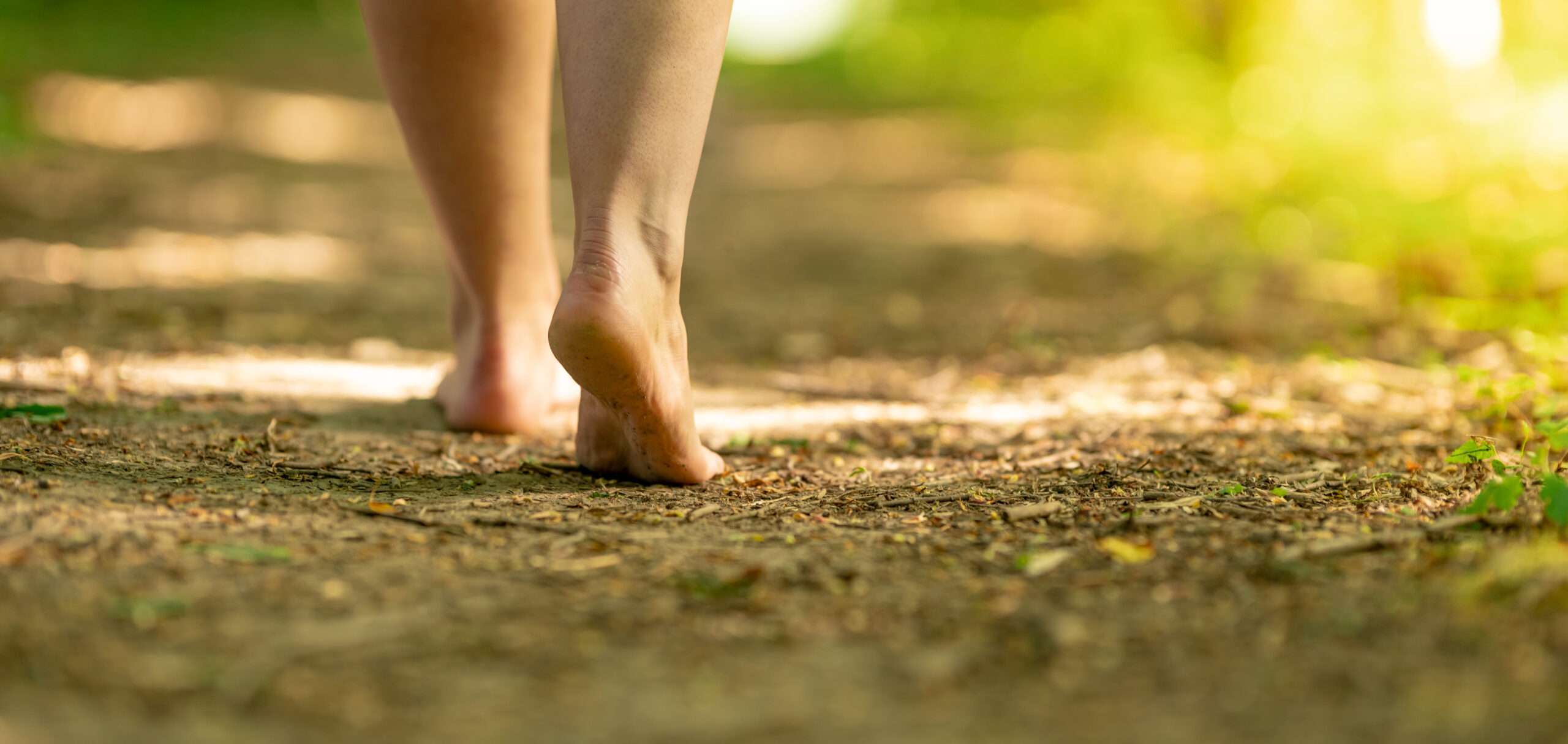Walking has traditionally been a recommended activity due to its accessibility and numerous physical and mental health advantages. Even though it has always been a part of human existence, it has not always been done with shoes! Our modern world tends to overlook the advantages of going barefoot. So, for whom is this exercise intended, and what can we do to guarantee that this reconnection with nature occurs in the best possible conditions?
The health advantages of barefoot walking
Despite the fact that wearing shoes fulfils our aesthetic and utilitarian needs, it is critical to allow our feet to move freely.
For starters, our shoes force our foot muscles to operate in an unnatural manner. We don’t realise it, but a barefoot uses a lot more muscles than a shoed foot! It gains mobility and must behave differently to our balancing needs once it is free of its restrictions.
The muscles of the entire leg and even the back work and tone up as a result of the domino effect.
As such, blood circulation is enhanced, and you avoid the “heavy legs” feeling that sometimes develops after prolonged standing.
Not only is it healthier to go barefoot, but it is also more enjoyable. When we wear shoes, we don’t typically activate the millions of nerve endings on our feet. Walking barefoot and re-discovering sensations helps you to activate these nerve endings by massaging them, so relieving neurological tension and, as a result, reducing your stress levels.
What is the best way to walk barefoot?
When you walk barefoot for the first time in a long time, you will undoubtedly realize that it is uncomfortable! Of course, the surface on which you practice must be decided, and a lawn will be far more pleasant than a pebble beach.
Start with surfaces that are easily accessible, such as your house or yard, to get the benefits of walking without shoes. This will acclimate your feet to walking barefoot and strengthen the skin on your arches.
Then you could take your shoes off for walks – in the park, on grass at first, then on rougher terrain – for as long as you feel comfortable. Start on flat terrain if possible, so you can focus on the textures rather than the slope of the ground or your stability.
If you plan on hiking sans shoes, bring a pair with you in case you need to protect your feet if the terrain isn’t as easy as you thought. To prevent making the trip unpleasant, carrying a first aid bag in case of blisters or injuries is also a smart idea.
If you wish to work out or run barefoot, start with short periods of time and in regions that are safe for your feet before progressing further. Barefoot running has various advantages, including reduced stress on the heel, greater weight distribution, and better muscle stimulation. However, it’s critical to stay in your comfort zone and avoid pushing yourself too hard too fast, since you risk harming yourself. Before weighing the dangers and advantages of this technique for yourself, it is generally a good idea that you get expert advice.
Barefoot walking is not for everyone
Walking barefoot has several health benefits, however those who are diabetic, have circulatory difficulties in their feet and legs, or who have foot health concerns should exercise caution when doing so, despite the many advantages.
Actually, a diabetic’s foot can swiftly deteriorate into severe sores that, in the worst-case scenario, may need amputation.
Take a few seconds after each walking session to evaluate your feet for any potential concerns. Watch out for:
– Sores and cuts;
– Bruises;
– Blisters or warts;
– Abnormal swelling of the foot.
This way, you’ll be able to track your progress and contact a podiatrist right away if the discomfort persists or the wounds get abnormally infected.
Assess your foot health prior to walking barefoot
You would have learned by now that the benefits of this simple activity of walking barefoot are many, whether they are physical or psychological. Keep in mind, nevertheless, that you must keep within your bounds. If you’d want to start this practice with the help of specialists, contact FootNetwork – a network of podiatrist clinics in Quebec.

